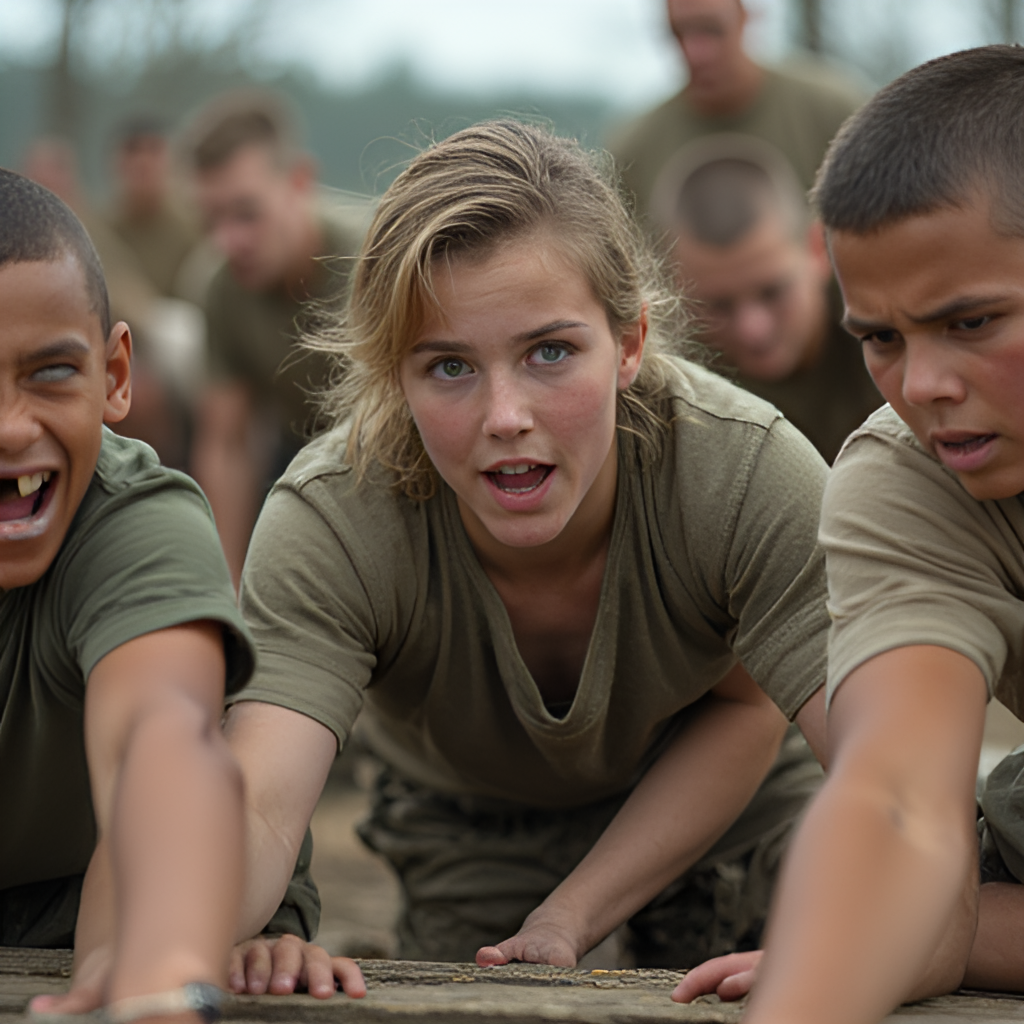Army Recruitment: Your Path to Service and Opportunity
- Considering a Career in the Military?
- Meeting the Eligibility Requirements
- Navigating the Army Recruitment Process
- Exploring the Wide Range of Army Careers
- What to Expect in Basic Combat Training
- Beyond the Uniform: The Perks of Joining
- Understanding the Realities and Challenges
- Transitioning to Civilian Life
- Frequently Asked Questions About Joining the Army
- Is Army Recruitment Right for You?
Army recruitment is a significant step toward a challenging yet rewarding career path. If you’ve ever felt a pull towards service, a desire for something bigger than yourself, or simply wondered what life in the military is *really* like, you’re not alone. My own journey, while not military, involved a similar pivot towards a demanding service-oriented role, giving me a glimpse into the dedication and resilience required. Let’s be honest, joining the army isn’t like taking a standard office job; it demands a unique blend of physical toughness, mental fortitude, and an unwavering commitment to a cause greater than individual ambition. Whether you’re fresh out of high school or considering a career change, understanding the ins and outs of army recruitment is crucial.
So, what does it take to sign up? And what opportunities and challenges lie ahead? I’ve done a deep dive into what joining the military entails, and I’m here to share some key insights to help you navigate this potentially life-altering decision. We’ll cover everything from eligibility to life after service, giving you a comprehensive look at army recruitment.
Meeting the Eligibility Requirements
Before you even speak to a recruiter, there are fundamental requirements you’ll need to meet. These aren’t just bureaucratic hurdles; they ensure you’re physically, mentally, and morally prepared for the rigors of military life. For enlisted soldiers, you generally need to be between 17 and 35 years old (with parental consent if under 18), a U.S. citizen or a lawful permanent resident with a valid Green Card, and have a high school diploma or GED.
Officer candidates typically have slightly different criteria, including being a college graduate by the time of commissioning and usually having a younger age limit, often under 31. Beyond age and education, there are strict medical and physical fitness standards. You’ll undergo a thorough physical exam at a Military Entrance Processing Station (MEPS) to ensure you’re healthy enough to serve. Meeting height and weight standards is also essential, though programs exist to help some candidates meet these before training.
Moral standards are equally important. This means having a clean criminal record and demonstrating good character. While waivers can sometimes be authorized for certain issues, a solid background makes the process smoother. It’s worth checking the latest detailed requirements on official Army recruitment websites, as specifics can change.
Navigating the Army Recruitment Process
Okay, so you think you meet the basic criteria. What’s next? The army recruitment process is a multi-step journey designed to evaluate your suitability and match you with a role. It typically begins with speaking to a recruiter. Think of them as your guide through the initial stages. They can provide crucial information, answer your questions, and help you understand the different paths available, whether you’re interested in enlisted service or becoming an officer.
After this initial conversation, you’ll likely take the Armed Services Vocational Aptitude Battery (ASVAB) test. This isn’t just a pass/fail exam; your scores help identify which of the many Army jobs you’re best suited for and eligible to pursue. Preparing for the ASVAB is a smart move; there are resources available to help you understand the test format and subjects.
Following the ASVAB and physical exam at MEPS, you’ll meet with a counselor to explore career options based on your test scores and the Army’s needs. This is where you choose your Military Occupational Specialty (MOS). Once you’ve selected a job, you’ll sign an enlistment contract and take the Oath of Enlistment, officially swearing into the Army. The time between signing and starting basic training can vary; some head straight to training (Direct Ship), while others enter the Delayed Entry Program (DEP).
The entire process, from initial contact to enlisting, can take several weeks or even months, depending on your circumstances and the availability of training spots.
Exploring the Wide Range of Army Careers
One of the biggest misconceptions about joining the army is that everyone is headed for the front lines. While combat roles are vital, the Army offers a staggering array of career paths, much like a large corporation. We’re talking hundreds of different jobs! Whether your skills lie in technology, healthcare, logistics, engineering, or even music, there’s likely a role for you.
Here’s a glimpse at the diversity of roles you might find:
- Combat Arms: Infantry, Armor, Artillery (the traditional fighting roles)
- Technical & Engineering: IT specialists, engineers, mechanics, and maintenance roles
- Healthcare: Medics, nurses, doctors, and support staff
- Support & Logistics: Supply chain management, transportation, and administrative positions
- Intelligence: Military Intelligence officers and analysts
- Special Forces: Elite roles requiring additional rigorous training and selection
Your ASVAB scores and personal interests play a big part in determining which MOSs are available to you. This opportunity to gain training and experience in a specific field is a significant benefit of service, often translating directly into valuable skills for civilian careers later on.

This image is a fictional image generated by GlobalTrendHub.
What to Expect in Basic Combat Training
Okay, you’ve enlisted! Now comes Basic Combat Training (BCT), often referred to as “boot camp.” This is where civilians are forged into soldiers. It’s physically demanding, mentally challenging, and designed to instill discipline, teamwork, and the core values of the Army.
Typically lasting about 10 weeks (though some specialized paths like Infantry One Station Unit Training combine BCT and initial job training, lasting longer), BCT is structured into phases. You’ll learn everything from physical fitness and basic rifle marksmanship to land navigation and tactical skills. Drill Sergeants are central figures in BCT; their job isn’t to break you, but to build you up, push your limits, and help you discover strength you didn’t know you had.
It’s intense, yes, but it’s also where you build incredible bonds with your fellow recruits. The shared experience, the early mornings, the physical exertion – it all creates a unique sense of camaraderie and shared purpose. Having gone through challenging team-building exercises in my own career, I can only imagine the depth of connection formed during BCT. It’s transformative, preparing you not just for your specific job but for the realities of military life.
Beyond the Uniform: The Perks of Joining
Beyond the opportunity for service and adventure, there are tangible benefits to joining the military that can significantly impact your life during and after your service. Financial stability is a major draw, with competitive pay, housing allowances, and comprehensive healthcare for you and your family, often at low or no cost.
Education benefits are also substantial. The GI Bill can provide significant financial support for college or vocational training, allowing you to pursue higher education while serving or after you transition to civilian life. The Army also offers tuition assistance for courses taken while you’re serving.
Other notable benefits include paid time off (typically 30 days a year), retirement plans, life insurance, and access to resources like VA home loans. Plus, depending on your role, you might get to travel and experience different parts of the world. These benefits represent a significant investment in their soldiers by the military, providing a solid foundation for personal and professional growth.
“The Army offers a variety of benefits including financial stability, education and training, health care, family benefits, and more to support you and your family.”
Understanding the Realities and Challenges
While the benefits are clear, it’s equally important to go into army recruitment with eyes wide open about the challenges. Military life isn’t always easy, and it impacts not just the service member but their family too. Frequent moves (Permanent Change of Station or PCS) are common, which can mean saying goodbye to friends and adjusting to new communities and schools multiple times.
Deployments are another significant challenge. Extended periods away from loved ones can strain relationships and create emotional stress for both the deployed soldier and their family. Spouses often take on increased responsibilities, and children may struggle with the separation and uncertainty. While support services exist to help military families navigate these difficulties, they are a real and often demanding part of the lifestyle.
The military is a highly structured environment, demanding discipline and adherence to rules. This can be a significant adjustment, especially coming from civilian life. There are also inherent risks associated with military service, particularly in combat roles or during deployments to dangerous areas. Acknowledging these challenges isn’t meant to discourage, but to provide a realistic picture of what joining the army entails.

This image is a fictional image generated by GlobalTrendHub.
Transitioning to Civilian Life
Eventually, most soldiers transition back to civilian life. This can be another significant adjustment period, bringing its own set of challenges and opportunities. Leaving the close-knit community and camaraderie of the military can feel isolating, and veterans may need to actively seek out new support networks. Finding a civilian career that utilizes military skills and experience is also a key step, though thankfully, many skills gained in the Army are highly valued in the civilian workforce, from leadership to technical expertise.
Veterans may also face challenges related to mental and physical health, particularly if they experienced trauma or injury during their service. Accessing VA benefits and support services is crucial during this time.
However, for many, life after the army is incredibly fulfilling. The discipline, work ethic, and resilience developed in the military are invaluable assets. Many veterans successfully pursue higher education using their GI Bill benefits and build successful civilian careers. As one veteran shared, the hardships overcome in the Army instilled a sense of confidence and self-worth that propelled them to achieve things they never thought possible in civilian life.
Frequently Asked Questions About Joining the Army
Let’s quickly address some common questions about army recruitment:
- How long does the recruitment process take?
- It varies, but typically ranges from a few weeks to several months, depending on individual circumstances, testing, background checks, and job availability.
- Do I need a college degree to join?
- Not necessarily for enlisted roles, but it is generally required to become a commissioned officer.
- What is MEPS?
- MEPS stands for Military Entrance Processing Station. This is where applicants undergo physical, mental, and moral evaluations as part of the enlistment process.
- Is Basic Training very difficult?
- Yes, Basic Training is designed to be challenging both physically and mentally, pushing recruits to their limits and building resilience.
Is Army Recruitment Right for You?
Considering army recruitment is a major decision, one that involves weighing significant benefits against real challenges. The opportunity for a stable career, comprehensive benefits, education support, and the chance to serve your country are powerful incentives. At the same time, the demands of military life, including frequent moves and deployments, require careful consideration and preparation. As someone who values dedication and service, I deeply respect those who choose this path. Ultimately, the decision comes down to your personal goals, values, and willingness to embrace a unique and demanding lifestyle. If you’re seeking a career that offers unparalleled training, personal growth, and the chance to be part of something larger than yourself, army recruitment might just be the right direction for you. Explore the official resources, talk to recruiters, and honestly assess if you’re ready for the journey.